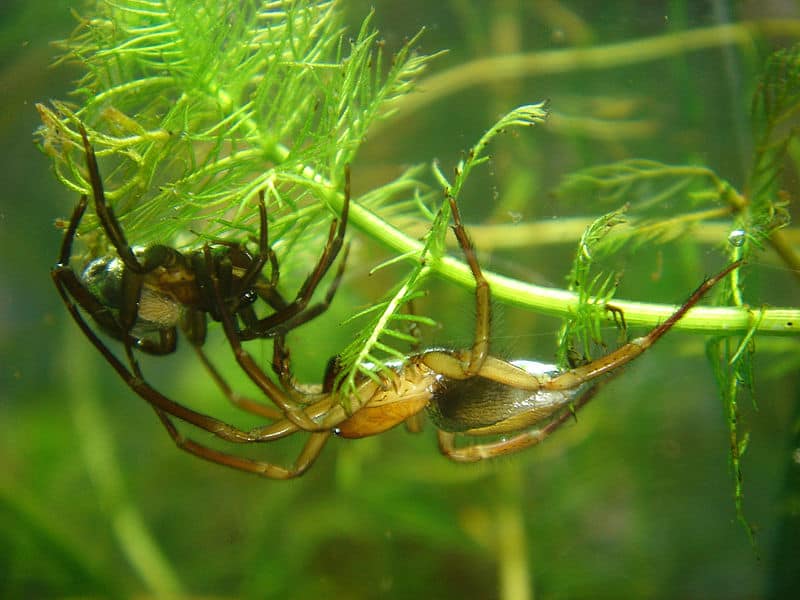
Diving Bell Spider Facts
- The astounding Diving Bell Spider remains the only known arachnid to spend its life nearly completely under the water.
- This remarkable arthropod only surfaces to refresh its supply of air and to occasionally bring prey to the surface.
- Also, its bite does not appear to pose a serious threat to humans. However, it has been reported to be rather painful.
- At the moment, its numbers appear to be rather stable, and its habitat range remains sufficient.
- Therefore, the IUCN does not currently have a classification for this spider, although that may change in the future.
Related Articles
Diving Bell Spider Physical Description
Firstly, it must be noted that the surprising Diving Bell Spider displays an unusual form of sexual dimorphism for an arachnid.
In addition, in most related species, the female grows the largest. But in the case of this distinctive creature, the male grows the largest.
Males also have an overall head and body length averaging 0.4 – 0.6 in (10 – 15 mm), whereas females only average 0.31 – 0.47 in (8 – 12 mm).
The coloring of this arthropod also varies, though rather slightly, among individuals, ranging from light to extremely dark brown.
- Kingdom: Animalia
- Phylum: Arthropoda
- Class: Arachnida
- Order: Araneae
- Family: Dictynidae
- Genus: Argyroneta
- Species: A. aquatica
Diving Bell Spider Distribution, Habitat, and Ecology
The native habitat of the fascinating Diving Bell Spider also includes much of mainland Europe and parts of Asia.
Within that range, it also lives exclusively in freshwater habitats with an abundance of various aquatic plants.
This typically includes such areas as ponds, canals, lakes, marshes, and also slow-moving streams across its range.
It manages to live underwater by constructing a rather ingenious airtight structure from the silk it produces in its own body.
Further, t spends the great majority of her life in her bubble, usually only emerging to refresh its air supply or feed.
Its prey usually consists of small insects and crustaceans. In turn, it itself most commonly falls prey to fish and frogs.
Species Sharing Its Range
Check out our other articles on 6 Mysterious Natural Phenomena, Eurasian Brown Bear, Bay of Islands, Scythian Lamb, Goldsmith Beetle, Evening Cicada, Weedy Seadragon, Porbeagle
